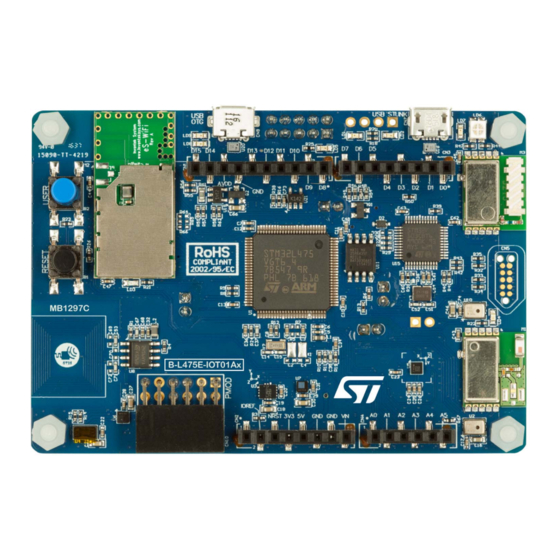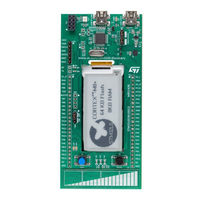
User Manuals: ST STM32L4 Series Evaluation Board
Manuals and User Guides for ST STM32L4 Series Evaluation Board. We have 8 ST STM32L4 Series Evaluation Board manuals available for free PDF download: Programming Manual, Manual, User Manual, Application Note
ST STM32L4 Series Programming Manual (262 pages)
Brand: ST
|
Category: Computer Hardware
|
Size: 2 MB
Table of Contents
Advertisement
ST STM32L4 Series Programming Manual (262 pages)
Brand: ST
|
Category: Computer Hardware
|
Size: 2 MB
Table of Contents
ST STM32L4 Series User Manual (110 pages)
Brand: ST
|
Category: Microcontrollers
|
Size: 1 MB
Table of Contents
Advertisement
ST STM32L4 Series Manual (213 pages)
Simplifying Microsoft Azure Connectivity with Discovery Kit IoT Node
Brand: ST
|
Category: Microcontrollers
|
Size: 14 MB
Table of Contents
ST STM32L4 Series Application Note (52 pages)
Getting started with touch sensing control on STM32 microcontrollers
Brand: ST
|
Category: Microcontrollers
|
Size: 4 MB
Table of Contents
ST STM32L4 Series User Manual (57 pages)
Discovery kit for IoT node, multi-channel communication
Brand: ST
|
Category: Motherboard
|
Size: 1 MB
Table of Contents
ST STM32L4 Series Application Note (56 pages)
Brand: ST
|
Category: Microcontrollers
|
Size: 3 MB
Table of Contents
ST STM32L4 Series Application Note (58 pages)
Brand: ST
|
Category: Microcontrollers
|
Size: 0 MB
Table of Contents
Advertisement







